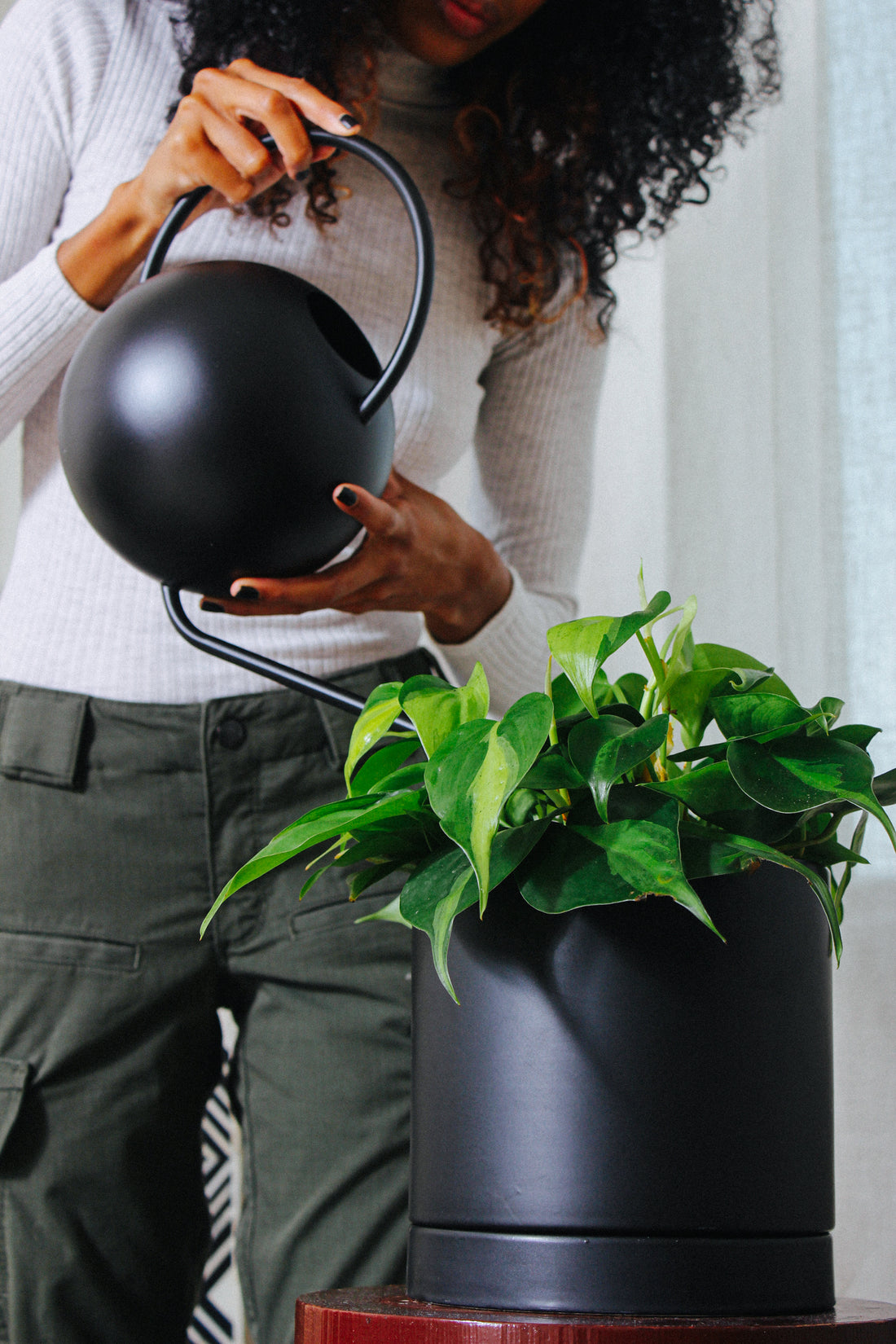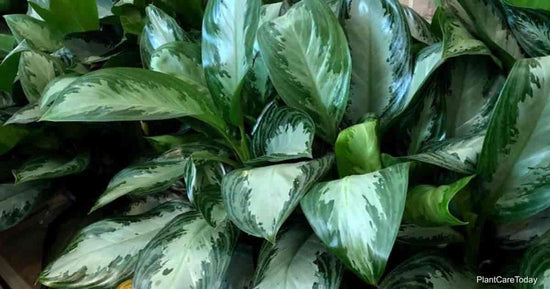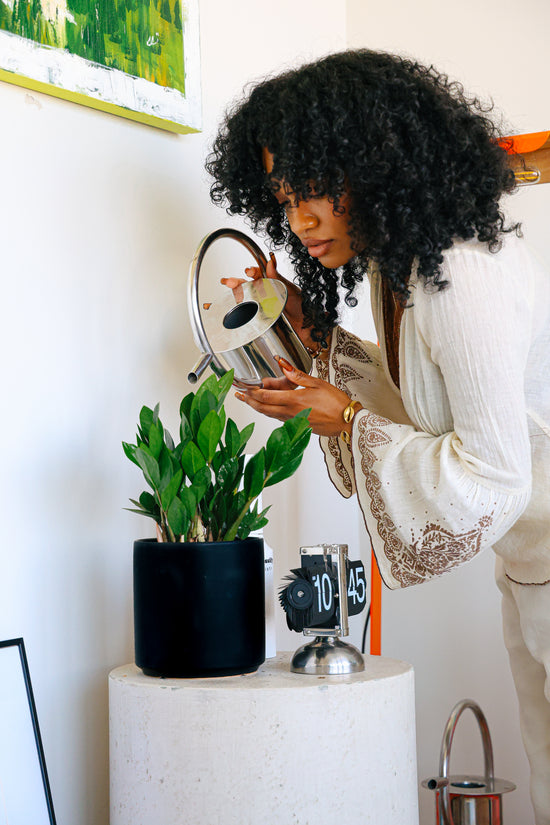UNDERSTANDING NEEDS
Imagine yourself on a cold, gray winter day at your most tired. You may want to stay in bed all day or have little energy to perform basic tasks such as feeding yourself. Plants are similar in that on these short, cold days, they require a bit less from you as they simply want to hunker down and rest. Nearly anything can disturb this “sleep” cycle, including repotting and fertilizing.
The most common winter mistakes come from being either too neglectful or too hands-on in your routine. To successfully care for them, it will require that you scale back your watering frequency while making up for reduced light and dry indoor air. We’ll break down everything you need to know.
TWEAKING YOUR ROUTINE
Just like the human immune system requires extra caution during the cold months, plant systems have a few specific winter needs to keep strong until spring. Here’s how to perfect your winter care routine.
Reduce Your Watering Frequency
Houseplants need less water in the wintertime for a few reasons: the days are shorter, and the plant uses less energy and resources. This means soil will take longer to dry out. To match this slower pace, reduce how often you water your plants, and always check the soil moisture before the next go-round. To confirm the moisture level, use a reading device such as a Moisture Meter that detects how wet the soil is throughout the pot. Alternatively, you can insert your finger deep into the soil to assess its condition before watering. Set reminders to water if needed. Some plants can go weekly, bi-weekly, or monthly between rounds.
If your planter has a drainage hole, you should always use enough water to see it flow out of the bottom of the pot. For very dehydrated plants, give them a soak by bottom-watering through the saucer and discard after 5-10 minutes.
Red Flags:
Yellow Leaves - Common symptom of overwatering
Fungus Gnats or White Growth on Soil - Common symptom of overwatering or poor drainage
Brown, Dry, or Wrinkled leaves - Common symptom of underwatering
Make Lighting Accommodations
Since the sun sets earlier this time of year, our house plants don’t have access to the same light they used to. Depending on your region and home, some of your collection will suffer from a lack of light during the winter. To provide more of the year-round sunshine they’d receive in their native climates, sunlight can be supplemented with grow lights. These mimic the sun for tropical and desert plants that prefer 6+ hours of light. Plants in dimmer rooms, such as those with north-facing windows, can also be moved to a brighter area of your home.
Red Flags:
Dull Color - Commonly a result of low lighting
Brown or Bleached, Dry Spots - Commonly a symptom of leaf burn from intense light
Humidity for Tropical Plants
Proper humidity levels are essential for the health of the majority of your indoor collection. Low humidity causes tissue damage and can produce cosmetic changes quite quickly. Additionally, the heat sources we use to warm our homes commonly dry the air out even more, affecting our skin health, breathing, and sleep. Succulents and cacti are species that are tolerant of our dry indoor air without needing anything extra.
Boost humidity around moisture-loving plants in your home via:
Red Flags:
Curled Leaves - Common symptom of dry air
Dry Edges - Common symptom of dry air
Irregular Spot Growth on Leaves - Possible sign of fungus from excess moisture
Check for Pests
Sneaky pests tend to infest plants during the wintertime when they are already stressed. The best way to prevent this mayhem is to keep plants in tip-top health. The second best way is to check them thoroughly a few times during the cold season. While many plant insects will be hard to see, common tissue-feeding pests like Spider Mites and Mealybugs can be found on the underside of leaves, in the crevices where stems meet, and on new growth.
Thoroughly wipe down your leaves using a wet cloth to prevent and stop infestations early on. If you can positively identify signs of infestation, use a soapy water mixture or diluted neem oil for extra measure. Read more about plant pests here.
Red Flags
Wilting Leaves - When all other care is met, repeat wilting can be a sign of pests
Webbing or Insect Clusters - A sure sign of infestation
Larvae in Soil or Saucer - A sign that adult pests exist and are reproducing
Wet, Soggy Soil - A sign that your plant may be suffering from root rot or fungus gnats
Once spring returns, expect to see increased energy, growth, and care needs. Become an expert on what each plant in your collection needs by reviewing its care requirements on the plant’s product page or reading its Care Guide. If you have any questions, our in-house Plant Specialist is here to help!





